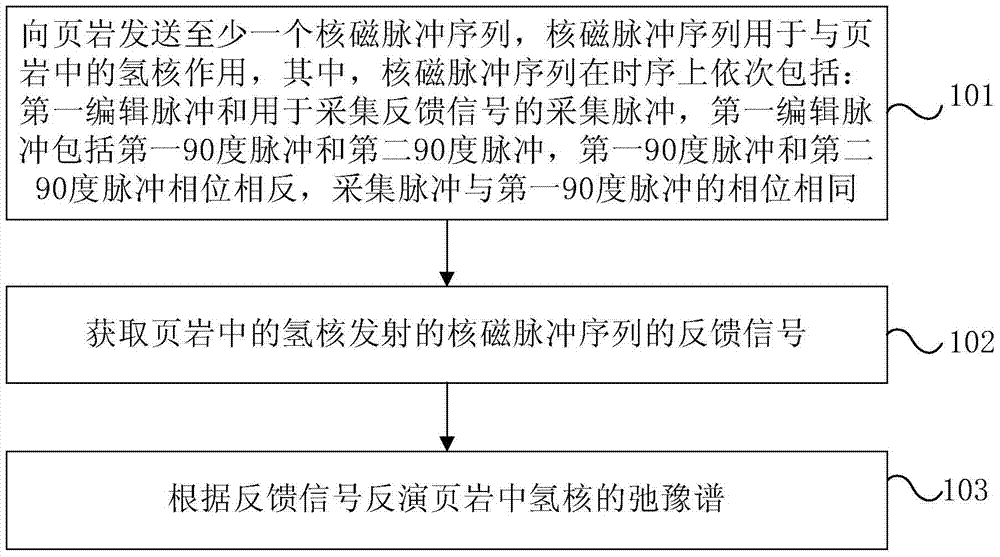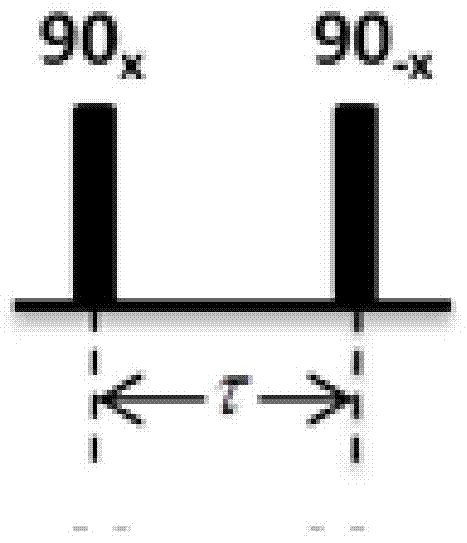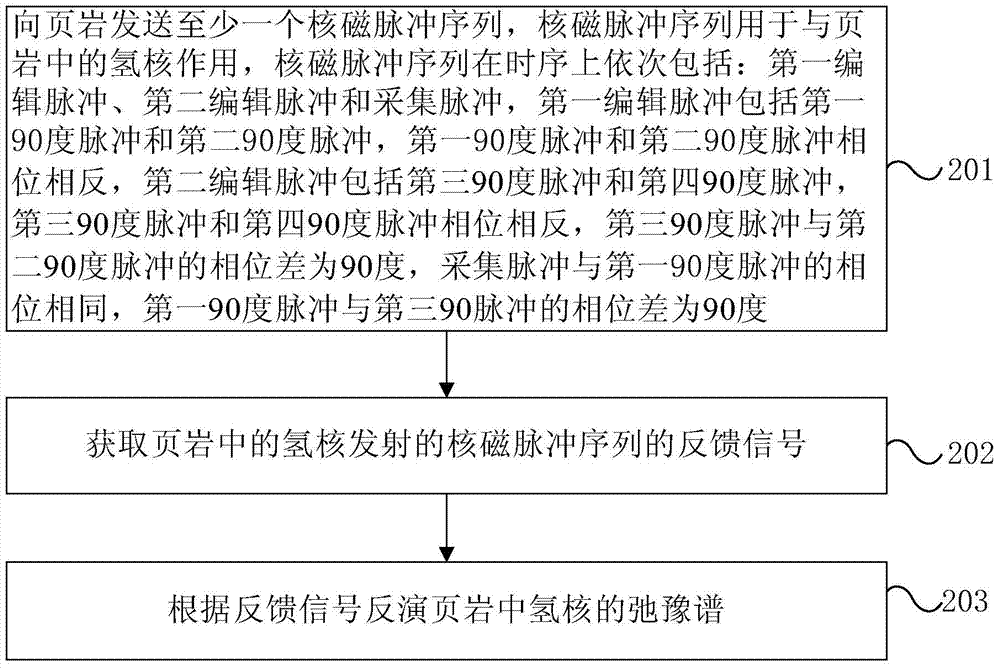Method and device for distinguishing components of nuclear magnetic resonance organic shale
A technology of nuclear magnetic resonance and shale, applied in the direction of analysis by nuclear magnetic resonance, etc., can solve the problems of inability to distinguish organic shale, complex nuclear magnetic resonance response, etc.
- Summary
- Abstract
- Description
- Claims
- Application Information
AI Technical Summary
Problems solved by technology
Method used
Image
Examples
Embodiment 1
[0021] figure 1 It is a flow chart of the NMR organic shale component differentiation method provided by the embodiment of the present invention, and the implementation subject of this embodiment is the NMR instrument. Before introducing the differentiation method provided in this example, briefly introduce the application background of this method. The shale in this example includes not only unsealed cores obtained by conventional coring methods at normal temperature and pressure, but also mineralized rocks. For shale cores saturated with water, oil or hydrocarbons, before performing the method of this embodiment, some pretreatment processes are required, that is, before sending the NMR pulse sequence to the shale, it is necessary to apply a magnetic field to the shale , put shale into the probe of the nuclear magnetic resonance instrument, and the probe magnet generates a magnetic field, wherein the Larmor frequency of the hydrogen nucleus is generally less than or equal to ...
Embodiment 2
[0037] This embodiment is a further explanation of the above embodiments. image 3 It is a flow chart of the method for distinguishing components of NMR organic shale provided by another embodiment of the present invention, such as image 3 As shown, the method for distinguishing the components of the NMR organic shale includes:
[0038] Step 201, sending at least one nuclear magnetic pulse sequence to the shale, the nuclear magnetic pulse sequence is used to interact with hydrogen nuclei in the shale, wherein the nuclear magnetic pulse sequence sequentially includes: a first editing pulse, a second editing pulse and an acquisition pulse in sequence , wherein the first editing pulse includes a first 90-degree pulse and a second 90-degree pulse, the phases of the first 90-degree pulse and the second 90-degree pulse are opposite, and the second editing pulse includes: a third 90-degree pulse and a fourth 90-degree pulse pulse, the phase of the third 90-degree pulse and the four...
Embodiment 3
[0050] This embodiment provides a device for distinguishing components of NMR organic shale, which is used to implement the method for distinguishing components of NMR organic shale in the above embodiment, Figure 5 A schematic structural diagram of a component separation device for nuclear magnetic resonance organic shale provided in another embodiment of the present invention, as shown in Figure 5 As shown, the NMR organic shale component distinguishing device includes: sending
[0051] module 501 , acquisition module 502 and inversion module 503 .
[0052] Wherein, the sending module 501 is used to send at least one nuclear magnetic pulse sequence to the shale, and the nuclear magnetic pulse sequence is used to interact with the hydrogen nuclei in the shale, wherein, the nuclear magnetic pulse sequence sequentially includes: the first editing pulse and the The acquisition pulse of the feedback signal, wherein the first editing pulse includes a first 90-degree pulse and a...
PUM
 Login to View More
Login to View More Abstract
Description
Claims
Application Information
 Login to View More
Login to View More - R&D
- Intellectual Property
- Life Sciences
- Materials
- Tech Scout
- Unparalleled Data Quality
- Higher Quality Content
- 60% Fewer Hallucinations
Browse by: Latest US Patents, China's latest patents, Technical Efficacy Thesaurus, Application Domain, Technology Topic, Popular Technical Reports.
© 2025 PatSnap. All rights reserved.Legal|Privacy policy|Modern Slavery Act Transparency Statement|Sitemap|About US| Contact US: help@patsnap.com



